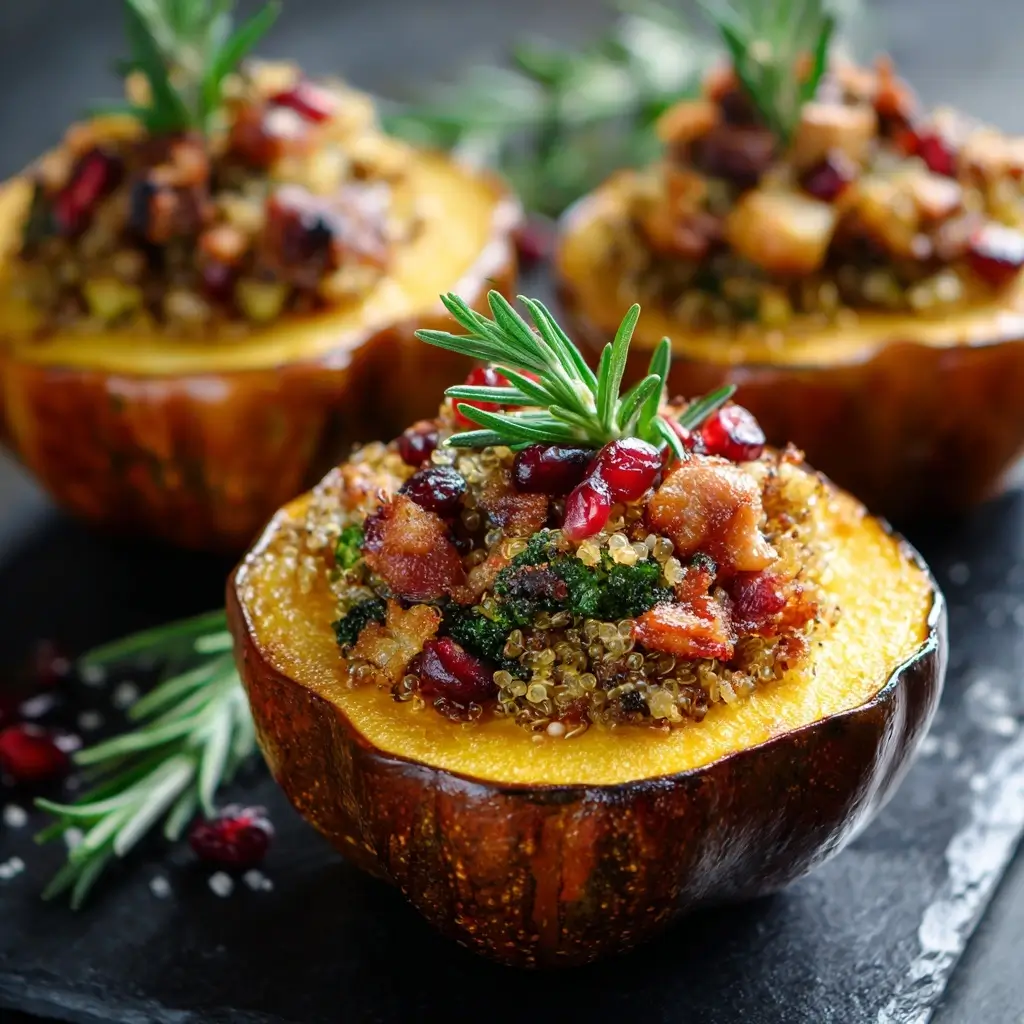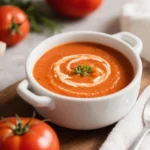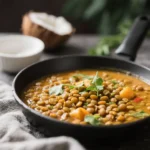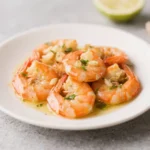Introduction
Stuffed acorn or butternut squash is a versatile, wholesome, and visually stunning dish that brings together the natural sweetness of winter squash with rich, savory fillings to create a meal that’s both comforting and nutritious. Whether served as a main course during a cozy family dinner or showcased at a holiday gathering, this dish exemplifies seasonal cooking at its finest. Its vibrant orange flesh, tender texture, and ability to pair beautifully with a wide range of ingredients make it a favorite among home cooks and professional chefs alike. Roasting the squash not only intensifies its flavor but also provides a perfect edible vessel for stuffing—making presentation effortless and waste minimal. With endless possibilities for customization based on dietary needs, cultural preferences, and ingredient availability, stuffed squash can be adapted from rustic homestyle comfort food to elegant gourmet fare.
The History
The use of winter squash in culinary traditions dates back thousands of years, particularly among Indigenous peoples of North America who first cultivated varieties like acorn and butternut squash long before European contact. These squashes were staples in Native American agriculture, often grown alongside corn and beans in the “Three Sisters” planting system, which promoted soil health and sustainable farming. Acorn squash (Cucurbita pepo) was named for its shape resembling an oversized acorn and has been enjoyed since pre-colonial times. Butternut squash (Cucurbita moschata), developed more recently in the 20th century by farmer Charles Leggett in Stow, Massachusetts, quickly gained popularity due to its smooth texture, sweet flavor, and easy-to-peel skin. Both types have become central to American fall and winter cuisine, especially during Thanksgiving and Christmas celebrations. The concept of stuffing vegetables likely originated in Mediterranean and Middle Eastern cuisines, where hollowed vegetables were filled with grains, herbs, and meats. Over time, these techniques merged with New World ingredients, giving rise to dishes like stuffed peppers, tomatoes—and eventually, stuffed squash. Today, stuffed acorn and butternut squash are celebrated across North America and beyond as emblematic dishes of seasonal harvest cooking, combining ancient agricultural wisdom with modern gastronomic creativity.
Ingredients Breakdown
The beauty of stuffed squash lies in its balance between simplicity and complexity—each ingredient plays a distinct role in building layers of flavor, texture, and nutrition. Here’s a detailed breakdown:
- Acorn or Butternut Squash: The foundation of the dish. Acorn squash offers a slightly nutty, earthy taste with firmer flesh, while butternut squash is sweeter, creamier, and easier to scoop. Choose organic when possible for optimal flavor and reduced pesticide exposure.
- Olive Oil: Used for roasting and sautéing, extra virgin olive oil adds richness and helps caramelize the squash’s natural sugars.
- Salt and Black Pepper: Essential seasonings that enhance all other flavors without overpowering them.
- Onion and Garlic: Aromatics that form the flavor base. Yellow onion provides sweetness when cooked, while garlic adds depth and pungency.
- Ground Meat (optional): Turkey, sausage, ground beef, or lamb can be added for heartiness. For vegetarian versions, omit or replace with plant-based alternatives.
- Grains: Cooked quinoa, brown rice, farro, or wild rice add substance and fiber. Quinoa is especially popular due to its complete protein profile and fluffy texture.
- Dried Fruits: Cranberries, raisins, or chopped apricots introduce a pop of sweetness and chewy contrast.
- Nuts: Toasted pecans, walnuts, or pine nuts contribute crunch and healthy fats. They also echo the nuttiness inherent in the squash.
- Herbs: Fresh sage, thyme, rosemary, or parsley bring aromatic brightness. Dried herbs work too but fresh ones elevate the dish significantly.
- Broth or Stock: Vegetable or chicken broth moistens the stuffing and infuses it with savory notes.
- Cheese (optional): Parmesan, feta, goat cheese, or shredded cheddar can be sprinkled on top or mixed into the filling for creaminess and umami.
- Egg (optional): Sometimes used as a binder in the stuffing to help hold everything together, especially if baking the stuffed halves longer.
- Maple Syrup or Honey (optional): A drizzle enhances the squash’s natural sweetness, especially effective with acorn squash.
- Pumpkin Seeds (Pepitas): Add a nice crunch and boost of magnesium and zinc when used as a topping.
Each component can be tailored to suit vegan, gluten-free, paleo, or low-carb diets, making this dish remarkably inclusive.
Step-by-Step Recipe
- Preheat Oven: Set your oven to 400°F (200°C). Line a baking sheet with parchment paper or lightly grease it to prevent sticking.
- Prepare the Squash: Wash the exterior of one medium acorn or butternut squash thoroughly. Using a sharp chef’s knife, carefully cut the squash in half lengthwise from stem to base. Use caution—the skin is tough! For butternut squash, you may want to slice off the top stem and bottom end first for stability.
- Scoop Out Seeds: Use a sturdy spoon to scrape out the seeds and stringy pulp from the center cavity. Save the seeds if desired—they can be roasted later like pumpkin seeds.
- Season and Roast: Place the squash halves cut-side up on the baking sheet. Drizzle each half with about 1 teaspoon of olive oil and sprinkle with salt and pepper. Optionally, add a small amount of maple syrup or honey for extra sweetness. Roast in the preheated oven for 35–45 minutes (acorn) or 45–55 minutes (butternut), until the flesh is fork-tender and easily pierced. Remove and set aside to cool slightly while preparing the stuffing.
- Make the Filling Base: In a large skillet over medium heat, warm 1–2 tablespoons of olive oil. Add diced onion and sauté for 4–5 minutes until translucent. Stir in minced garlic and cook for another minute until fragrant.
- Add Protein (if using): If including ground meat, add it now and cook until browned, breaking it apart with a spoon. Drain excess fat if necessary.
- Incorporate Grains and Flavorings: Add 2 cups of cooked grain (quinoa, rice, etc.), 1/3 cup dried fruit, 1/4 cup toasted nuts, and 1–2 tablespoons of chopped fresh herbs. Pour in 1/4 to 1/2 cup of warm broth to moisten the mixture. Season with additional salt, pepper, and spices such as cinnamon, nutmeg, or smoked paprika depending on your flavor direction.
- Adjust Consistency: The stuffing should be moist but not soggy. If too dry, add more broth; if too wet, let it simmer uncovered for a few more minutes.
- Stuff the Squash: Once the squash halves are cool enough to handle, gently scoop the filling into each cavity, mounding it slightly. You can press down lightly to compact the stuffing.
- Optional Cheese Topping: Sprinkle grated Parmesan, crumbled feta, or shredded mozzarella over the top of each stuffed half.
- Final Bake: Return the stuffed squash to the oven and bake for an additional 15–20 minutes, allowing the flavors to meld and the cheese to melt and golden (if used).
- Garnish and Serve: Remove from oven, garnish with fresh herbs, a drizzle of balsamic glaze, or a sprinkle of pumpkin seeds. Let rest for 5 minutes before serving.
Tips
- Choose Uniform Squash: Select squash that sit flat when cut to avoid rolling in the oven. Look for heavy fruits with dull, not shiny, skins—this indicates ripeness.
- Uniform Thickness: When cutting butternut squash, try to divide it evenly so both halves roast at the same rate.
- Speed Up Cooking: Microwave the whole squash for 2–3 minutes before cutting to soften the skin and make slicing easier.
- Don’t Overfill: Leave about 1/2 inch at the top to prevent spillage during final baking.
- Toasting Nuts: Always toast nuts before adding to the stuffing—this intensifies their flavor and improves texture.
- Use Day-Old Grains: Leftover cooked grains tend to absorb flavors better and hold their shape well in the stuffing.
- Enhance Sweetness: Brush the inside of the squash with maple syrup or brown sugar butter before roasting for a caramelized finish.
- Check Doneness: Insert a knife into the squash wall—it should slide through easily when fully roasted.
- Bake Covered First: If concerned about drying out, cover the squash with foil during initial roasting.
- Rest Before Serving: Allowing the stuffed squash to rest ensures the filling settles and makes for cleaner presentation.
Variations and Customizations
This recipe is incredibly adaptable to different tastes, dietary lifestyles, and global flavor profiles:
- Vegan Stuffed Squash: Omit meat and cheese. Use lentils, chickpeas, or tempeh as protein sources. Boost umami with soy sauce, miso paste, or nutritional yeast.
- Mediterranean Style: Fill with bulgur wheat, sun-dried tomatoes, Kalamata olives, spinach, artichokes, and feta cheese. Finish with lemon zest and oregano.
- Mexican-Inspired: Use black beans, corn, cilantro, jalapeños, cumin, chili powder, and lime juice. Top with avocado slices and a dollop of Greek yogurt or sour cream.
- Curried Version: Sauté onions with curry powder or paste, then mix in cooked chickpeas, coconut milk, raisins, and cashews. Garnish with cilantro and mango chutney.
- Keto/Low-Carb: Replace grains with riced cauliflower or finely chopped mushrooms. Add sausage, bacon, cream cheese, and green onions for richness.
- Breakfast-Stuffed Squash: Fill roasted halves with scrambled eggs, spinach, turkey bacon, and cheddar cheese. Bake briefly to set.
- Fruit & Nut Delight: Combine apples, pears, dried cranberries, walnuts, cinnamon, and oats for a dessert-like version. Serve with a scoop of vanilla yogurt or ice cream.
- Seafood Stuffed: Mix flaked salmon, crab meat, breadcrumbs, dill, and lemon into a grain base for an elegant entrée.
- Italian Herb Blend: Use arborio rice, sundried tomatoes, basil, mozzarella, and marinara sauce for a risotto-style stuffing.
- Spicy Southwest: Add fire-roasted peppers, chipotle in adobo, black beans, and quinoa with a hint of cayenne for heat lovers.
Health Considerations and Nutritional Value
Stuffed acorn or butternut squash isn’t just delicious—it’s a powerhouse of essential nutrients that support overall health:
- Rich in Vitamins: Both squashes are exceptionally high in vitamin A (from beta-carotene), crucial for vision, immune function, and skin health. One cup provides over 100% of the daily recommended intake.
- High in Fiber: Promotes digestive health, stabilizes blood sugar levels, and supports satiety, aiding in weight management.
- Low in Calories: Acorn squash has approximately 60 calories per cup; butternut is around 80, making them excellent choices for nutrient-dense, low-calorie meals.
- Antioxidant Properties: Contains antioxidants like vitamin C, alpha-carotene, and lutein, which combat oxidative stress and reduce inflammation.
- Heart-Healthy: Naturally low in sodium and fat, and contains potassium, which helps regulate blood pressure.
- Complex Carbohydrates: Provide sustained energy release, ideal for active individuals or those managing diabetes (when portion-controlled).
- Plant-Based Protein Options: By incorporating legumes, quinoa, or tofu, the dish becomes a balanced source of protein suitable for vegetarians and vegans.
- Gluten-Free Friendly: As long as gluten-free grains or substitutes are used, this dish is safe for people with celiac disease or gluten sensitivity.
- Omega-3s via Nuts: Walnuts and flaxseeds (if added) contribute plant-based omega-3 fatty acids, beneficial for brain and cardiovascular health.
- Calcium and Iron Sources: Especially when fortified with dark leafy greens, legumes, and certain cheeses, this dish contributes to bone and blood health.
However, moderation is key. Be mindful of added fats (like butter or oils), sugars (maple syrup, dried fruit), and sodium (broths, cheeses), particularly for those managing hypertension, diabetes, or heart conditions. Opt for low-sodium broths and limit added sweeteners for a healthier profile.
Ingredients
- 1 medium acorn or butternut squash (about 2–3 pounds)
- 2–3 tablespoons olive oil, divided
- 1/2 teaspoon sea salt (or to taste)
- Freshly ground black pepper, to taste
- 1 medium yellow onion, finely diced
- 2 cloves garlic, minced
- 1/2 pound ground turkey, Italian sausage, or plant-based alternative (optional)
- 2 cups cooked quinoa, brown rice, or preferred grain
- 1/3 cup dried cranberries or raisins
- 1/4 cup chopped pecans or walnuts, toasted
- 1/4 cup fresh parsley, sage, or thyme, chopped
- 1/2 cup vegetable or chicken broth
- 1/4 cup grated Parmesan, crumbled feta, or goat cheese (optional)
- 1 tablespoon maple syrup or honey (optional)
- 1/2 teaspoon ground cinnamon or smoked paprika (optional)
- Salt and pepper to taste
Directions
- Preheat oven to 400°F (200°C). Prepare a baking sheet with parchment paper.
- Cut the squash in half lengthwise and scoop out seeds and strings.
- Place squash halves cut-side up on the baking sheet. Drizzle with 1 tablespoon olive oil, season with salt and pepper, and optionally brush with maple syrup.
- Roast for 35–55 minutes (depending on type) until tender when pierced with a fork. Remove and reduce oven temperature to 375°F (190°C).
- While squash roasts, heat 1–2 tablespoons olive oil in a large skillet over medium heat. Sauté onion until soft (4–5 minutes).
- Add garlic and cook for 1 minute until fragrant.
- If using meat, add and cook until browned. Drain excess fat.
- Stir in cooked grains, dried fruit, nuts, herbs, and spices. Pour in broth and simmer for 5 minutes until absorbed. Adjust seasoning.
- Remove squash from oven and increase temp back to 400°F if continuing to broil/melt cheese.
- Spoon stuffing generously into each squash half, mounding slightly.
- Top with cheese if desired.
- Return to oven and bake for 15–20 minutes more, until heated through and cheese is bubbly and golden.
- Let rest 5 minutes. Garnish with fresh herbs, pumpkin seeds, or a drizzle of balsamic reduction.
- Serve warm as a main dish or hearty side.
FAQ
Can I make stuffed squash ahead of time?
Yes! You can roast the squash and prepare the stuffing up to two days in advance. Store separately in airtight containers in the refrigerator. Assemble and reheat in the oven at 350°F for 20–25 minutes before serving.
Can I freeze stuffed squash?
It’s best to freeze components separately. Roasted squash and stuffing can be frozen for up to 3 months. Thaw overnight in the fridge and reassemble before reheating.
How do I cut butternut squash safely?
Peel first with a vegetable peeler, then slice off both ends. Cut horizontally between the neck and bulb, then halve the bulb. Use a heavy knife and stable cutting board. Alternatively, microwave for 2–3 minutes to soften.
Is the skin edible?
While the skin softens during roasting, it can still be tough. Most prefer to eat the flesh and discard the skin, though young, thin-skinned squash may have tender enough skin to consume.
What can I substitute for grains?
Try riced cauliflower, quinoa, buckwheat, millet, or even mashed potatoes or lentils for variety.
Can I cook this in a slow cooker?
Yes. Roast the squash first, then place in the slow cooker, fill with stuffing, cover, and cook on low for 2–3 hours to heat through.
Are there seed benefits?
Absolutely! Save the seeds, rinse, toss with oil and salt, and roast at 300°F for 20–30 minutes. Rich in protein, zinc, and magnesium.
Why is my stuffing too dry/wet?
Dry stuffing needs more broth or oil; wet stuffing may need more grains or a few extra minutes of stovetop cooking to evaporate moisture.
Summary
Stuffed acorn or butternut squash is a nourishing, flavorful, and beautiful dish that celebrates the bounty of the season with endless customization options. Packed with vitamins, fiber, and complex carbohydrates, it’s as healthy as it is satisfying—perfect for weeknights or festive occasions alike.










